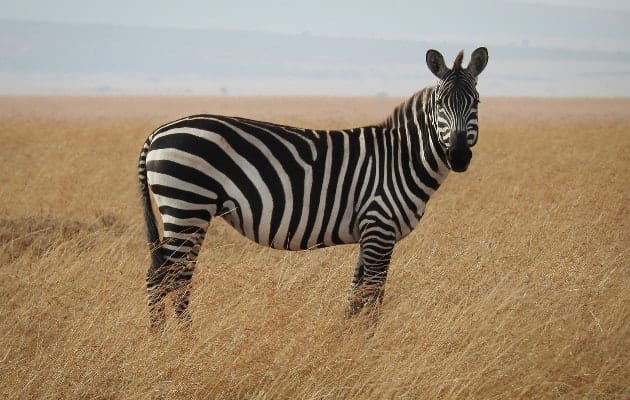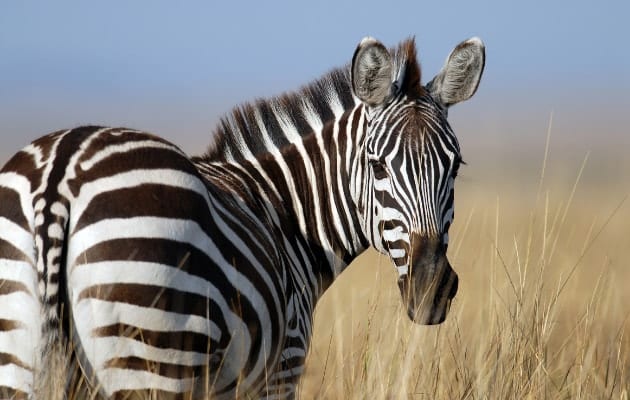Botswana has two very distinct faces.
And she wears them both with utter conviction.
Parched
During the dry season, you will have little doubt that you are in the midst of our planet’s largest semi-arid desert. Everything is bone dry as far as the eye can see and in the distance the air shimmers and dances with heat. The Okavango Delta might be the largest inland delta in the world but as the hinterland waters start drying up, the shrubs and trees are bare, and visibility of wildlife is at its peak as the animals gravitate towards the water. The fight for survival is on.
Lush
Then the rains fall in Angola… the water flows down the Okavango River and the delta exhales becoming a superabundant oasis. The plains come alive and clouds drift over their own reflection in pools of standing water with grass, greenery and baby wildlife everywhere.
Why your next Safari should be in Botswana
The three very distinct and complex ecosystems of Botswana deliver a diversity of terrain that is difficult to duplicate. In one Safari you can venture from one of the largest salt pans in the Makgadikgadi to the verdant Delta with the Linyanti water system branching off and take on the heat in the Kalahari Desert.
Everywhere you go incredible, unspoiled wildlife can be found… and as Botswana is so remote, low-volume tourism allows for an intimate experience.
But as it is close to South Africa it is very accessible!
Finally, Botswana is also home to Africa’s longest migration. Surprised? Most people find this fact astonishing and this incredible migration remains something of an insider secret.
Here is everything you need to know about the Botswana migrations:

Mystical migration
If you know anything about the inner workings of a migration you might instinctively understand that the seasons of Botswana provide the perfect motivation for the game to take a spectacular road trip. And ancient wildlife routes prove that this was once possibly the largest seasonal overland mammal migration on earth.
There are stories about the first half of the 20th century, of thousands of wildebeest and zebra migrating every season. Then, after Botswana became independent in 1966, the European Union offered the new country a very good contract for the supply of meat. The deal was considered quite marvelous. Raising cattle was an efficient industry in Botswana.
There was only one very small problem.
Botswana was also home to buffalo. And buffalo could carry foot and mouth disease. They could transmit the disease to cattle and this resulted in a fear that infected meat could infect cattle in countries receiving it.
Luckily, the solution to the very small problem was fairly simple. Erect incredibly vast fences across the country, effectively separating the cattle from the wildlife.
Human encroachment, fast farm development, and fences all disrupted the great natural movement phenomena that used to happen all over the globe. As with many of the quick fixes humans love so dearly, the result was estimated at hundreds of thousands to millions of wildlife dying as they were blocked from year-round water sources.
Over the next half-century Botswana slowly discovered an alternative source of an economic boost. The extraordinary natural beauty the country possessed was being discovered by the world and tourist arrivals increased year over year. In 2006 the Nxai Pan veterinary fence that blocked the old migratory route was removed.
When the WWF, the Namibian Ministry of Environment and Tourism with Elephants without Borders, and Botswana’s Department of Wildlife and National Parks fitted GPS collars to eight adult female Burchell’s zebras (Equus quagga) in a study in 2012, they got a little more than they bargained for.
The trackers were recording that the zebras were traveling from the Chobe River on the border of Namibia all the way south to Nxai Pan.
It was a stunning discovery.
Within years of the fences coming down the zebra had once again started traversing the Kalahari. Following exactly in the footsteps of their distant predecessors.
While the Serengeti / Masai Mara migration remains the largest of our time, the journey from the Chobe River to Nxai Pan National Park is longest of all large mammal terrestrial migrations in Africa at over 300 miles (482 km) direct, round-trip journey.
The route follows wilderness that is virtually inaccessible. This made one of the most stunning natural phenomena on earth a virtual secret. Much about this migration remains a mystery. Along the way the zebra bypass destinations offering more food and shelter – some zebra will stop over at Seloko Plain, but eventually, they continue on.
Only 55% of the Okavango Delta zebra migrate in any given year. The other 45% remain in one place throughout the year. No one knows why some go and some stay.

Some of the questions have been answered though.
Why do zebra migrate?
It is suggested that the Makgadikgadi National Park grass has a higher content of protein and minerals than the Okavango Delta greenery.
Were the routes genetically encoded?
It is widely believed to be… how else could they follow routes they had never known before.
And the migration story holds an important message for humans!
Studies by the Royal Veterinary College, University of London produced data confirming that the zebra migratory routes can recover when physical barriers are removed. It is a powerful reminder that human influence may negatively impact animals but the effects of our unfortunate actions can also be reversed when the protection of wildlife becomes a priority.
The migration is changing things for Botswana too. The traditional May to September tourist season is now extended into the rainy season from January to April when the Pans flourish with fresh grass calling the zebras.

About the Nxai Pan Zebra Migration
Burchell’s Zebra follow a relatively linear path.
The zebras are found within the floodplains of the Chobe River in Namibia and Botswana in the dry season that runs from July through early November. Once the annual rains start in Nxai Pan the zebra migration commences. Over the next 14 days to a month the zebra will complete the route traveling directly or a little more circuitously and completing one way.
The herds can be found in Nxai Pan National Park and surrounding grasslands over December, January, and February.
On their return journey (from the end of February) the zebras take a more leisurely approach. They will cover between 300 and 500 miles (500 and 800 km) and take around 80 days to complete the trek back… arriving on the Chobe Riverfront any time between April and early July.

About the Makgadikgadi Pan Zebra Migration
The second migration in Botswana – from the Okavango to Makgadikgadi Pans (the largest contiguous salt flats in the world – involves 15,000 zebras. It was first witnessed after a veterinary fence was removed in 2008-2009 and identified in 2013.
The timing depends on rainfall. The animals will start moving during the rainy season from December to April.
The migration takes place within KAZA (Kavango-Zambezi Transfrontier Conservation Area). This transboundary conservation area is the largest in the world and stretches across five southern African countries with Angola, Botswana, Namibia, Zambia, and Zimbabwe contributing a collective 270,000 square miles (440,000 square kilometers).
After the fences were removed in 2004 (quite some time longer than the average zebra lifespan of 12 years) the zebra were found migrating again within three years. This smaller migration travels a similar distance at a similar time only to Makgadikgadi Pan.
As with the Nxai migration, the Makgadikgadi migration commences from the Okavango Delta around the end of November when the rains start in the pans. After around a month the herds have covered the 180 miles (290 km) to reach the grasslands. They stay in the MPNP for nearly 80 days and return to the Okavango Delta typically in March.
Why does the natural phenomenon of migration exist?
* Migrations make good practical sense for everyone.
* It prevents over-grazing.
* It ensures optimal utilization of seasonal food.
* Predators and scavengers benefit from the congregation of the herd.
The Great Migration continues to be the largest of this natural phenomenon. The Botswana migrations are the longest.
Read the full report: Cambridge Core, Scientific Reports, R. Naidoo, M. J. Chase, P. Beytell, P. Du Preez, K. Landen, G. Stuart-Hill, and R. Taylor (2014): A newly discovered wildlife migration in Namibia and Botswana is the longest in Africa
